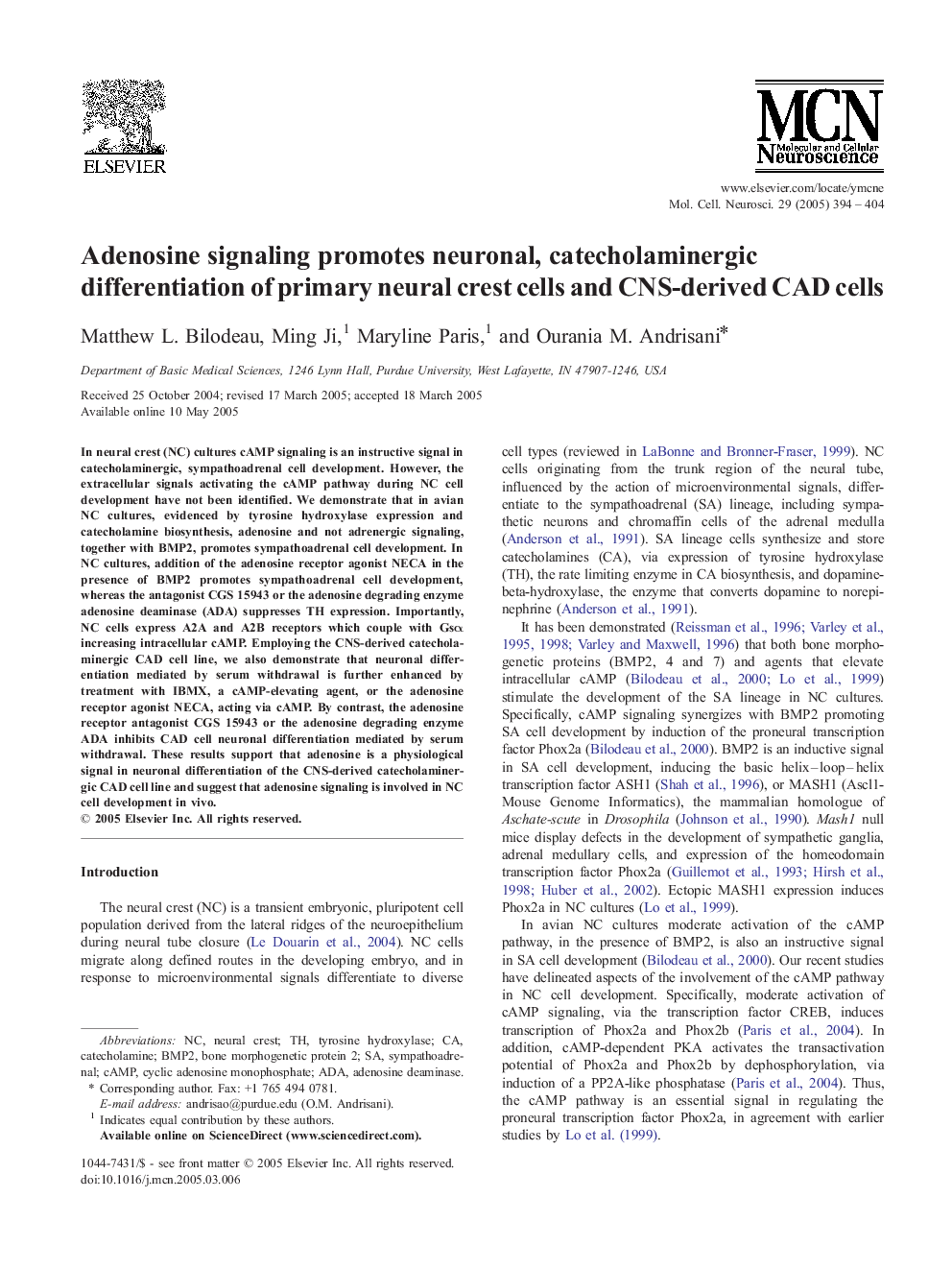| Article ID | Journal | Published Year | Pages | File Type |
|---|---|---|---|---|
| 10956889 | Molecular and Cellular Neuroscience | 2005 | 11 Pages |
Abstract
In neural crest (NC) cultures cAMP signaling is an instructive signal in catecholaminergic, sympathoadrenal cell development. However, the extracellular signals activating the cAMP pathway during NC cell development have not been identified. We demonstrate that in avian NC cultures, evidenced by tyrosine hydroxylase expression and catecholamine biosynthesis, adenosine and not adrenergic signaling, together with BMP2, promotes sympathoadrenal cell development. In NC cultures, addition of the adenosine receptor agonist NECA in the presence of BMP2 promotes sympathoadrenal cell development, whereas the antagonist CGS 15943 or the adenosine degrading enzyme adenosine deaminase (ADA) suppresses TH expression. Importantly, NC cells express A2A and A2B receptors which couple with Gsα increasing intracellular cAMP. Employing the CNS-derived catecholaminergic CAD cell line, we also demonstrate that neuronal differentiation mediated by serum withdrawal is further enhanced by treatment with IBMX, a cAMP-elevating agent, or the adenosine receptor agonist NECA, acting via cAMP. By contrast, the adenosine receptor antagonist CGS 15943 or the adenosine degrading enzyme ADA inhibits CAD cell neuronal differentiation mediated by serum withdrawal. These results support that adenosine is a physiological signal in neuronal differentiation of the CNS-derived catecholaminergic CAD cell line and suggest that adenosine signaling is involved in NC cell development in vivo.
Keywords
Related Topics
Life Sciences
Biochemistry, Genetics and Molecular Biology
Cell Biology
Authors
Matthew L. Bilodeau, Ming Ji, Maryline Paris, Ourania M. Andrisani,
